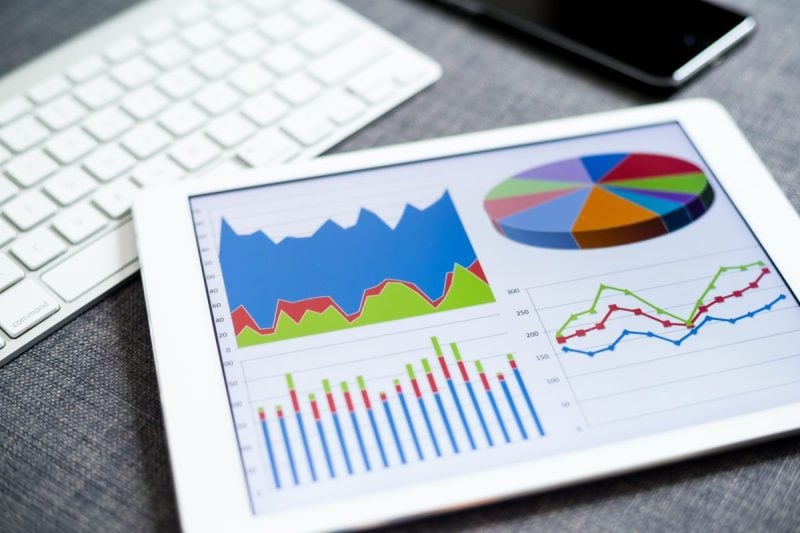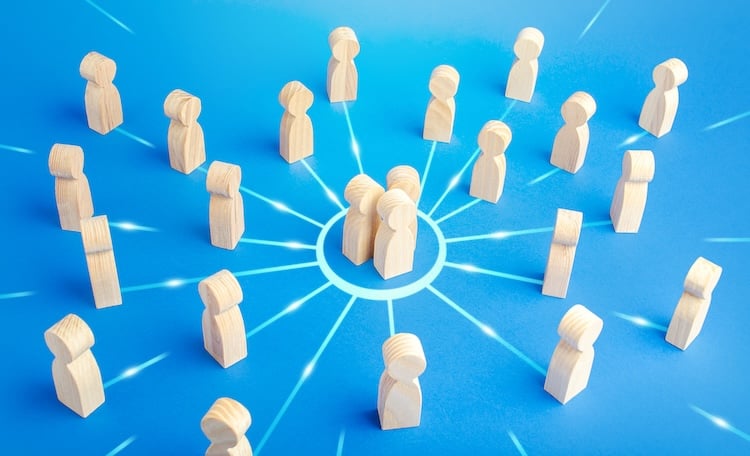Maybe you’re not sure what a favicon is, but you’ve seen them before! Say you’re bookmarking an article online you’d like to go back and read later. However, when you go back to your bookmarks, you can’t remember what the page or article was called. However, you see the tiny icon in your bookmarks and realize it’s the right website!
That tiny icon is what’s called a favicon. Favicons are extremely important for brand recognition for any company with a website. In this article, we’ll talk about what favicons are, why you should have one for your website, some tips for creating a favicon, and more. For assistance creating a favicon, contact SEO Design Chicago today!
Favicons: Everything You Need to Know
- 1 Favicons: Everything You Need to Know
- 2 What’s the Right Size for a Favicon?
- 3 Do I Need a Website Favicon?
- 4 How Do I Create a Favicon?
- 5 Get Started Creating Your Favicon Today!
- 6 Frequently Asked Questions
- 6.1 1. What file formats work best for favicons, and which should I avoid?
- 6.2 2. How long does it take for a new favicon to appear after I upload it?
- 6.3 3. Can I use different favicons for different pages on my website?
- 6.4 4. What happens if I don’t have a favicon on my website?
- 6.5 5. How do I add a favicon to my website’s HTML code?
- 6.6 6. Should my favicon be animated, and are there any restrictions on animation?
- 6.7 7. How can I test if my favicon is working properly across different browsers and devices?
A favicon (pronounced fave-icon) is the tiny, iconic image that represents your website. It shows up next to your website’s page name or title tag. But where else can you find your favicon? Here are some places they appear:
- Browser tab
- Bookmarks
- Toolbar
- Recently visited pages
- Search bars
- Mobile searches
Though tiny, a favicon is actually an important piece of your website’s branding. Having a clean and easy-to-recognize image allows customers to be familiar with your brand. They are useful when a user bookmarks your site so they can go back to it at another time. Some companies overlook this important step when building a website, but it’s recommended to have one for every site.
Many businesses utilize their logo or another simple image for their favicon. Target is a great example. Go to www.target.com and check out the bullseye icon they use as their favicon.
Some other businesses use an icon with one to three characters of text. One example is Wikipedia. They use their classic “W”. This is just one example of how you can use text instead of an image for your favicon.
Check out more examples of favicons online to get ideas for your own website’s favicon. Just keep in mind that your image needs to be unique yet simple, so it’s memorable.
What’s the Right Size for a Favicon?
So, now that you know all about what a favicon is, you are probably wondering what size yours should be. It’s important to know the correct dimensions. However, the size of your favicon can depend on a couple factors, like the browser or if you use a website host.
Generally, the file size of your favicon should be a multiple of 48 pixels square. So, your icon file size could be 48x48px of 144x144px. No matter which of those icons you use, the image will get rescaled to a 16×16 ratio.
If you host your website on a website builder, your favicon size will not be the same. WordPress, for instance, requires 512×512 pixels for their favicon. Squarespace, on the other hand, requires 300×300 pixels for theirs. So, always check with your website host before sizing your brand-new favicon!
Keep in mind that favicons show up on browser tabs, bookmark lists, frequently visited sections, or even in a shortcut icon on a user’s desktop. So, your favicon needs to be easily scalable for those instances. If you know the sizing for these various instances, you can design the best possible favicon for your website. Or, you can hire a website design agency to help you.
Do I Need a Website Favicon?
There are several reasons why your website can benefit from having a favicon. Here are a few:
Brand Recognition
They help improve your brand recognition. Your favicon will help people recognize your branding and become familiar with your business. This helps them remember you later!
Professionalism
A favicon adds an air of professionalism to your website. It helps your website look legitimate and stand out from your competitors online.
SEO
Did you know that a it helps your SEO? It’s true! Favicons make your website more user-friendly, which in turn helps your SEO. It also increases the chances that someone will return to your website and convert into a customer.
Bookmarks
If someone bookmarks your website, they will find it easier later on if you have a favicon. An icon is easier to remember than a brand name!
Tabs
Chances are, you have multiple tabs open even while reading this email. A favicon helps users recognize your site among their open tabs in their web browser. They’re more likely to click on the open tab when they see and recognize it!
How Do I Create a Favicon?
Are you ready to design a favicon for your own site? Here are a few tips from the experts at SEO Design Chicago about how to create and design your own favicon.
Be Smart About Space
It’s important to use the small amount of space you have for your favicon judiciously. You want to leave some white space, but you also don’t want to leave so much that your users can’t see the image. Many businesses utilize their logo for their favicon, which is very smart for branding purposes. However, if your logo doesn’t look right as a favicon or doesn’t scale down, you might have to choose another image.
Whether you choose to use your company logo or create a new image for your favicon, just make sure to use your space smartly and keep it balanced. Don’t leave it too empty – or make it too crowded!
Make it Simple
Make sure when you are designing your favicon to keep it simple. You want it to be different enough from others so that it can be recognizable, but you also don’t want to use a complicated design. The point of a having one is to help users find you easier online and emphasize your branding. Keep your favicon simple, clean, and easy to recognize.
Keep it Consistent with Your Brand
Especially if you choose to create a new image for your favicon, make sure to keep it consistent with the rest of your company’s branding. It’s important to reflect the rest of your brand, which makes it more recognizable for users. If you use colors in yours, make sure to stick to your brand colors. (As mentioned earlier, Target uses their iconic red branding.) Using the same consistent colors increases brand recognition.
Use a Designer
If you aren’t a professional graphic designer, consider using one to create your website’s favicon. A web designer can design a unique favicon just for your site, and as a bonus, they’ll be able to scale it correctly for any and all instances.
There are some favicon generators that exist to build one for your website. These generators might be easy and cheap (or even free.) But, if you hire a web designer, you will get an exclusive, well-designed favicon just for your site.
Get Started Creating Your Favicon Today!
A favicon is a tiny yet important piece of your website and company’s brand recognition. It helps users recognize and find your website quickly on their browsers, and it has the added bonuses of helping your SEO and upgrading your professionalism online.
If you don’t know how to get started designing your own, contact SEO Design Chicago today! Our team of web designers is happy to help you create a unique favicon just for your site.
Frequently Asked Questions
1. What file formats work best for favicons, and which should I avoid?
The most widely supported and recommended format is ICO (icon), which can contain multiple sizes in one file and works across all browsers. PNG is also excellent and increasingly popular due to its transparency support and smaller file sizes. SVG favicons are supported by modern browsers and offer perfect scalability, making them ideal for high-resolution displays. Avoid JPEG for favicons as it doesn’t support transparency and can look pixelated at small sizes. GIF works but is outdated and larger than necessary. For best compatibility, create your favicon in ICO format or provide multiple formats with PNG as a fallback.
2. How long does it take for a new favicon to appear after I upload it?
Favicon updates can take anywhere from a few minutes to several hours to appear across different browsers and platforms. Browser caching is the main culprit – browsers store favicons locally to improve loading speed. To see your new favicon immediately, try clearing your browser cache or opening an incognito/private browsing window. Mobile devices and bookmark updates may take longer, sometimes up to 24-48 hours. Search engines like Google may take even longer to update favicon displays in search results. Be patient and avoid repeatedly uploading the same favicon, as this won’t speed up the process.
3. Can I use different favicons for different pages on my website?
While technically possible, it’s not recommended for most websites. Having different favicons for different pages can confuse users and weaken brand recognition – the primary purpose of favicons is consistent brand identification. However, there are valid use cases: subdomain sites (like blog.yoursite.com vs. shop.yoursite.com), different product lines with distinct branding, or special landing pages for campaigns. If you do use multiple favicons, ensure they maintain visual consistency with your overall brand. Most successful websites use one consistent favicon across all pages to strengthen brand recognition and user experience.
4. What happens if I don’t have a favicon on my website?
Without a favicon, browsers typically display a generic icon (often a blank page or globe symbol) in tabs, bookmarks, and browser interfaces. This makes your website appear unprofessional and harder to identify among multiple open tabs or bookmarks. Users may have difficulty finding your site quickly when they have many tabs open. From an SEO perspective, while favicons aren’t a direct ranking factor, they contribute to user experience metrics that can indirectly affect search performance. Some browsers may also show a “broken image” icon, which can make your site look outdated or unreliable to visitors.
5. How do I add a favicon to my website’s HTML code?
To add a favicon, place this code in the <head> section of your HTML: <link rel="icon" type="image/x-icon" href="/favicon.ico">. For PNG files, use: <link rel="icon" type="image/png" href="/favicon.png">. You can include multiple sizes for better display across devices: <link rel="icon" type="image/png" sizes="32x32" href="/favicon-32x32.png"> and <link rel="icon" type="image/png" sizes="16x16" href="/favicon-16x16.png">. For modern browsers, consider adding: <link rel="shortcut icon" href="/favicon.ico">. Most website builders and CMS platforms like WordPress have built-in favicon upload options that handle the code automatically.
6. Should my favicon be animated, and are there any restrictions on animation?
Animated favicons are possible using GIF format, but they’re generally not recommended. Most browsers either don’t support animated favicons or disable animation to conserve battery and reduce distraction. Animated favicons can be annoying to users, especially when multiple tabs are open, and may appear unprofessional. They also use more system resources and can slow down browser performance. If you’re considering animation for brand personality, remember that favicons are meant to be subtle identifiers, not attention-grabbing elements. Stick to static, clean designs that focus on clear brand recognition rather than animation effects.
7. How can I test if my favicon is working properly across different browsers and devices?
Test your favicon by opening your website in different browsers (Chrome, Firefox, Safari, Edge) and checking if it appears in tabs, bookmarks, and browser interfaces. Use online favicon checkers like RealFaviconGenerator.net or Favicon.io’s checker to test multiple sizes and formats. Check mobile browsers on both iOS and Android devices, as mobile favicon display can differ from desktop. Bookmark your site and verify the favicon appears correctly in the bookmark list. Test in private/incognito mode to avoid cache issues. Also check how your favicon appears in search results by searching for your site on Google. For thorough testing, clear your browser cache between tests or use multiple browsers.




Contact Us today!